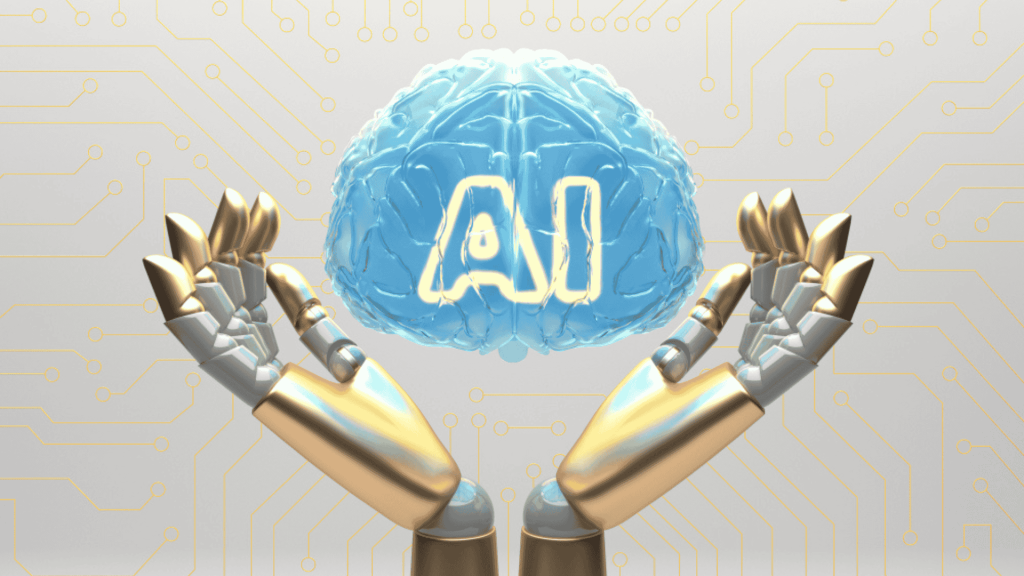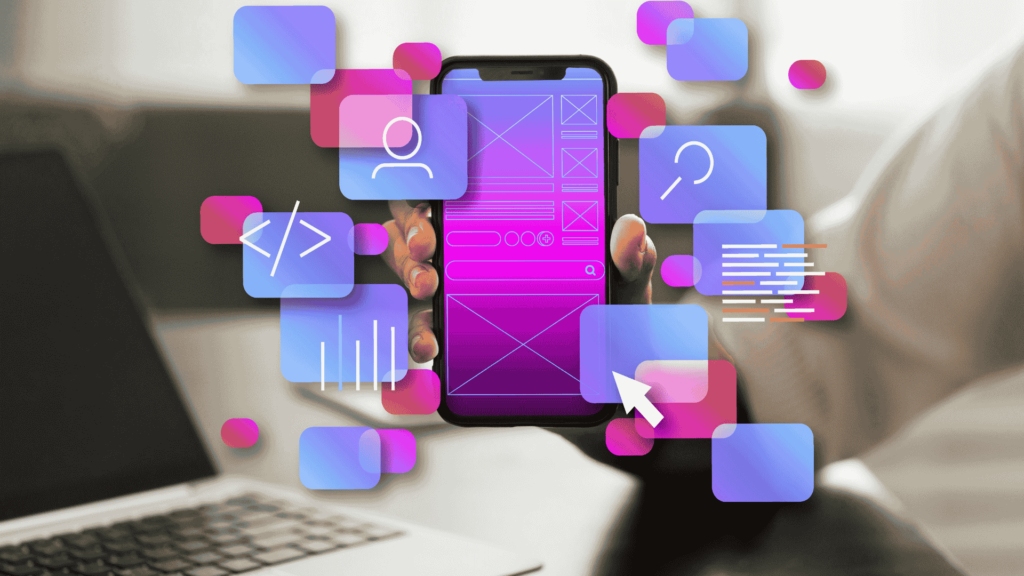It’s now 2025, and the methods in which we write, test, and deploy code have changed indelibly. Developers are no longer isolated in a room waiting for a bug to resolve or simply struggling to keep up with a seemingly endless parade of tech changes. Developers are co-creating with responsive AI tools that are truly integrated into every part of the development workflow.
The demand on developers has never been greater. They’re expected to ship faster, innovate constantly, and keep security airtight. AI-powered development tools are rising to meet these demands. From writing code to testing it, and even predicting user issues before they happen, AI is helping developers work smarter, not just harder.
This transition is not just based on improving efficiency. But opening up creativity, reducing burnout, and allowing developers to have the breathing room to solve real issues. AI tools are now more than just for cloud-native practices. They help with DevSecOps and microservices architecture.
Artificial intelligence (AI) is quickly becoming a key partner for developers in modern software development. Even in a non-traditional coding manner, AI is at the heart of the rise of low-code/no-code tooling that will enable teams to build faster and smarter without losing flexibility.
For those pushing the frontier from edge computing to quantum computing, blockchain integration, and progressive web apps (PWAs), AI helps tame the complexity, making advanced tech more accessible. These tools aren’t replacing developers. They’re elevating them.
In this guide, we’ll explore how AI tools are truly revolutionizing code in 2025, not with hype, but with practical impact across every level of software development. Welcome to the future of building, where your best assistant might not be human, but it speaks your language.
Everyday Developer Challenges and How AI Tools Solve Them
In 2025, developers still face the same core challenges they always have, just faster and with higher stakes. Codebases are bigger, users expect instant updates, and security threats evolve daily.

However, AI-powered development tools are now stepping in to make the process smoother, smarter, and more secure. Let’s break down some common frustrations and how AI tools are making them disappear:
1. Repetitive Coding Tasks
The Problem: Developers waste hours writing boilerplate code, API calls, or repetitive logic.
The AI Fix: Tools like GitHub Copilot or Replit AI act like autocomplete on steroids. They understand your coding style, offer smart suggestions, and even write full functions for you. With serverless architecture becoming more popular, AI tools help stitch together cloud functions rapidly, liberating developers from the burden of repetitive tasks and saving precious dev hours.
2. Debugging and Fixing Errors
The Problem: Tracking bugs across multiple files and environments is tedious and time-consuming.
The AI Fix: AI debuggers can now analyze logs, detect patterns, and suggest fixes before you even know something’s wrong. With DevSecOps integration, security issues are flagged and resolved within the same workflow, keeping your code clean and secure without slowing you down.
3. Managing Dependencies & Integrations
The Problem: One wrong package update can break your whole app.
The AI Fix: AI tools scan your environment and recommend secure, compatible libraries, reducing the chance of breaking changes. For teams working with microservices architecture or blockchain integration, these insights are crucial to maintaining system stability.
4. Writing Documentation
The Problem: Most devs dread it, and it often gets skipped.
The AI Fix: AI documentation tools will automatically lay out comments, README files, and API docs based on your code. It’s not just about time savings; it’s more about disability across teams.
5. Keeping Up with New Tech
The Problem: Developers are expected to know everything, from edge computing to quantum algorithms.
The AI Fix: AI chatbots, code assistants, and intelligent search tools offer instantaneous, real-time, and personalized help. You can get real-time, context-aware recommendations and examples for your progressive web apps (PWAs) or cloud-native development. This helps you stay updated with the latest tech trends, giving you peace of mind.
How AI Tools Improve the Development Lifecycle
AI is not simply helping with individual tasks; it is changing the entire software development lifecycle (SDLC) into a collaborative process. AI tools will enhance every stage of planning, coding, testing, deployment, and maintenance.
It brings intelligent tools that focus on smarter automation and real-time insights. This means developers can actively engage in the process. Now, let’s move through the stages of development to see how AI is already influencing each stage:
1. Planning & Requirements Gathering
Before a single line of code is written, teams must understand what the software should do. This phase is often prone to miscommunication and slow documentation.
AI in Action:
- Natural language processors can turn meeting notes or user stories into structured requirements.
- Predictive models help estimate effort, cost, and timelines.
- AI can analyze past projects to spot missing requirements or potential scope creep.
Bonus: Many low-code/no-code platforms now allow product managers and business users to map out workflows visually with AI auto-suggesting components based on intent.
2. Design & Architecture
Designing a robust software architecture, especially with cloud-native development or microservices, can be daunting.
AI in Action:
- Architecture assistants offer pre-tested patterns and suggest best practices for scalability.
- AI can simulate different architecture choices to predict performance and security outcomes.
- For complex deployments involving edge computing or serverless architecture, AI tools optimize resource allocation and latency.
3. Coding & Implementation
This is where AI shines most directly, collaborating with developers to write better code more efficiently.
AI in Action:
- Code completion tools (like GitHub Copilot or Tabnine) write real-time suggestions.
- AI identifies code smells, optimizes logic, and can even refactor outdated code.
- For teams building PWAs, blockchain applications, or exploring quantum computing, AI helps bridge the knowledge gap with custom examples and contextual assistance.
4. Testing & Quality Assurance
Manual testing is time-consuming and prone to errors. Automated testing is essential, and AI supercharges it.
AI in Action:
- Test case generation tools automatically create unit, integration, and UI tests.
- AI-based anomaly detection spots hidden issues by analyzing log data and user behavior.
- Tools integrate with DevSecOps pipelines, identifying vulnerabilities early and learning from past incidents.
5. Deployment & Monitoring
Modern deployments are often continuous and complex, especially with distributed systems and cloud-native stacks.
AI in Action:
- AI helps automate canary releases, rollbacks, and performance tuning.
- Monitoring tools utilize machine learning (ML) to detect downtime, API errors, or unusual user patterns.
- AI ops platforms offer proactive alerts, often fixing issues before users even notice.
6. Maintenance & Optimization
The launch isn’t the end; it’s the beginning of continuous improvement. Here, AI provides long-term value.
AI in Action:
- Predictive models suggest optimizations based on user behavior and server usage.
- Self-healing systems automatically resolve issues using predefined or learned responses.
- For evolving apps using low-code platforms, AI adjusts workflows with minimal human intervention.
Low-Code/No-Code | Help for Non-Developers and Developers
Once seen as tools only for non-tech users, low-code platforms and no-code tools in 2025 are now essential for developers too, especially when enhanced with AI.
These platforms are no longer just drag-and-drop page builders. Thanks to AI, they now offer smart suggestions, automated logic flows, and even design-to-code conversion that speeds up development for everyone.
For non-developers, AI makes building an app or dashboard feel like having a personal engineer on hand. Whether it’s choosing the proper data structure or optimizing a user journey, the system suggests improvements as you build. These AI-guided interfaces help users avoid standard design and logic mistakes without requiring an understanding of code.
But here’s what’s exciting: pro developers use these tools too.
Dev teams now rely on no-code tools to quickly prototype ideas, test UX flows, or get stakeholder feedback without waiting for complete dev cycles. Then, with the help of AI, they can convert those prototypes into real code. Tools like Figma-to-code plugins, logic engines, and intelligent UI builders bridge the gap between idea and implementation.
AI as a Mentor: Personalized Learning & Career Growth
Today’s developers don’t just write code; they continuously learn, adapt, and upskill. And in 2025, AI has become more than just a tool. It’s a mentor.
Modern AI coding tutors go beyond syntax suggestions. These smart assistants learn from your coding patterns, recommending resources tailored to your needs, whether it’s a best practice, a specific GitHub repo, or a trending library in your stack.
AI might prompt a guided tutorial based on the bugs you’re struggling with. Mastering microservices? It can suggest architecture diagrams or open-source examples from active communities.
This level of personalized learning makes it easier than ever to level up. For junior developers, it feels like having a pair programmer by your side, one who patiently explains errors, offers clean solutions, and doesn’t mind endless questions. For experienced devs, AI helps stay current in a fast-moving field, filtering noise and surfacing only what matters most.
Some teams even integrate AI mentors into onboarding processes. Rather than weeks of shadowing, new hires can ask questions and learn tooling with instant, contextual guidance, saving time for both learners and managers.
AI developer mentors are also transforming career paths. They help individuals build strong portfolios, explore new languages, or prepare for advanced roles, all with a smarter, custom learning experience.
Addressing Fears: Will AI Tools Replace Developers?
With all this talk about AI, one big question looms:
Will AI replace developers?
Short answer? No.
However, it will significantly change the role of developers.
AI tools are taking over repetitive, mechanical tasks that slow developers down. Writing boilerplate code, catching typos, or reformatting logic? That’s AI’s job now.
This frees developers to focus on what truly matters: creativity, problem-solving, and systems thinking.
In the past, developers spent a lot of time “doing the work.” However, in the future, they will spend far more time making design choices as they build solutions, managing AI-assisted workflows, and interpreting business problems into high-level logic that machines cannot handle alone.
As this happens, human value will always emphasize the human advantage of empathy, communication, and expanded strategic thinking.
So no, AI isn’t replacing developers. But the future of developer roles is evolving. And those who embrace AI as a partner rather than a threat will have a serious edge.
It’s not “AI vs Developer.” It’s AI with Developer, a collaboration that creates more possibilities than ever before.
The Future: What’s Next for AI and Developers?
AI and developers are evolving together. The AI tools we utilize in 2025 are at the outset of a much larger transformation of how software is conceptualized, created, and scaled.
New and emerging technologies, such as quantum computing, Edge Computing, and Blockchain Integration, are ushering in entirely new dimensions for development, which is complex, but it is already making strides. It optimizes simulations, manages distributed systems, and boosts speed in learning and scaling processes.
At the same time, trends like Cloud-Native Development and Serverless Architecture continue to accelerate, giving developers more freedom to tailor them to their use cases and more options for scaling. AI tools fit smoothly into each model. They manage the infrastructure and handle auto-scaling.
We’re also seeing the rise of Progressive Web Apps (PWAs) and microservices being driven by AI to optimize user experience, improve performance, and adapt functionality across devices and environments. And let’s not forget security. With DevSecOps Integration, AI helps detect threats earlier, enforce compliance, and secure apps from the first line of code.
So, what’s next?
Expect deeper collaboration between AI systems and human developers. Think AI copilots that design and build full-stack applications, write documentation, test code automatically, and even monitor production in real time, all while developers focus on solving unique human problems.
Expect the unexpected: entirely new programming paradigms, AI-built tools that build other tools, and global collaboration across disciplines that didn’t exist before.
Developers won’t be replaced, they’ll be amplified. The future of development is not less human. It’s more creative, more strategic, and more exciting than ever before.
Conclusion: A Smarter Future, Built Together
AI tools are not here to replace developers; they’re here to give them superpowers. It changes developers’ tasks from repetitive to creative expansions of the landscape of AI tools in 2025. Whether you’re a beginner learning your first language or a senior architect deploying at scale, AI is becoming your collaborator, your tutor, and your accelerator.
With the rise of low-code platforms, AI coding tutors, DevSecOps integration, and futuristic advances like quantum computing and edge computing, we’re stepping into a world where building great software is faster, safer, and smarter.
But at the center of this evolution is still you, the developer. Your problem-solving skills, empathy, and vision are more essential than ever. AI might write the code, but humans still write the future.
So, embrace the change. Learn, adapt, experiment, and lead. Because the future of development isn’t just AI-powered, it’s human-inspired. Need expert developers who know how to work smart with AI? Partner with us to build a faster, safer, and smarter future-ready way.





